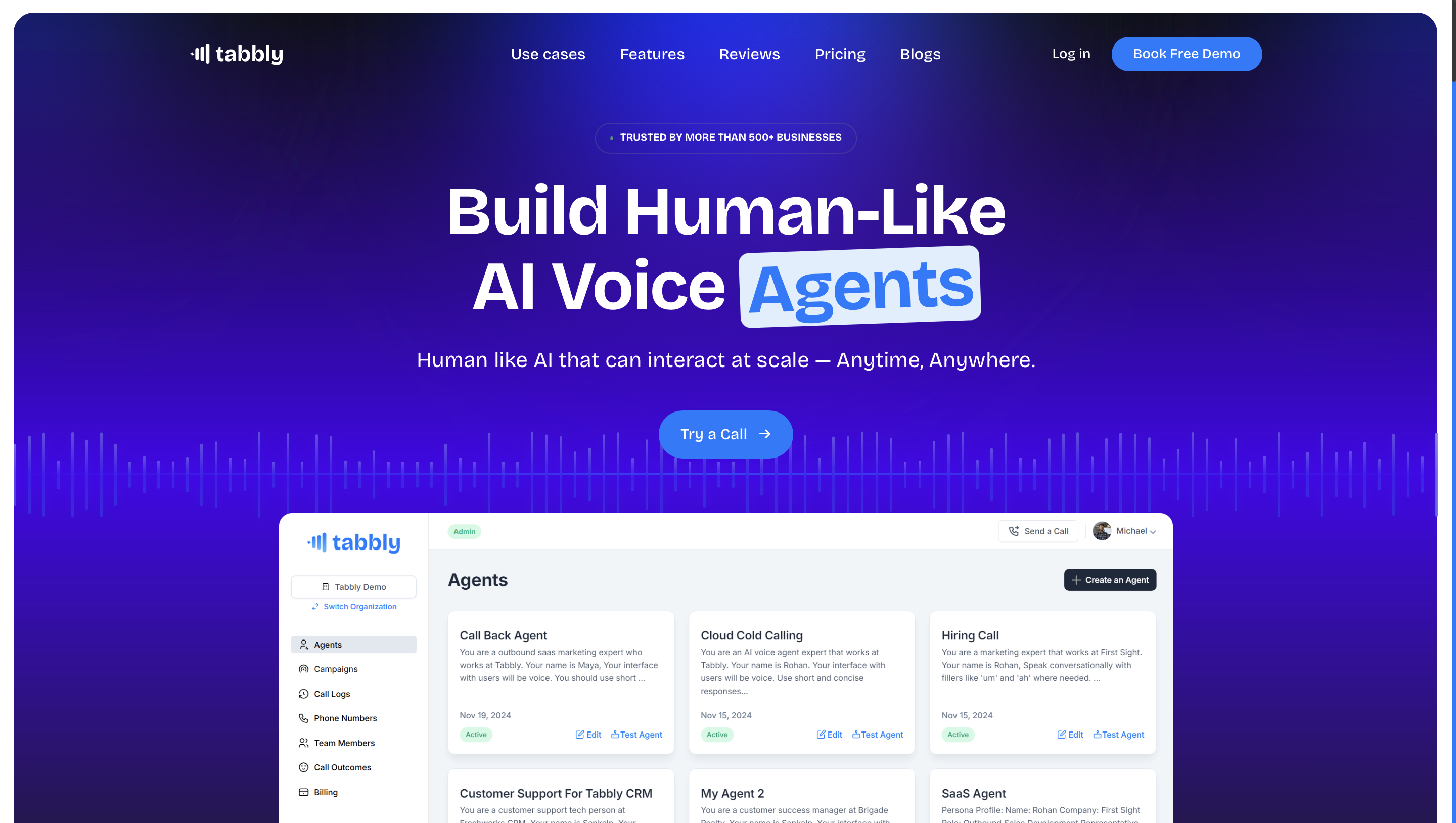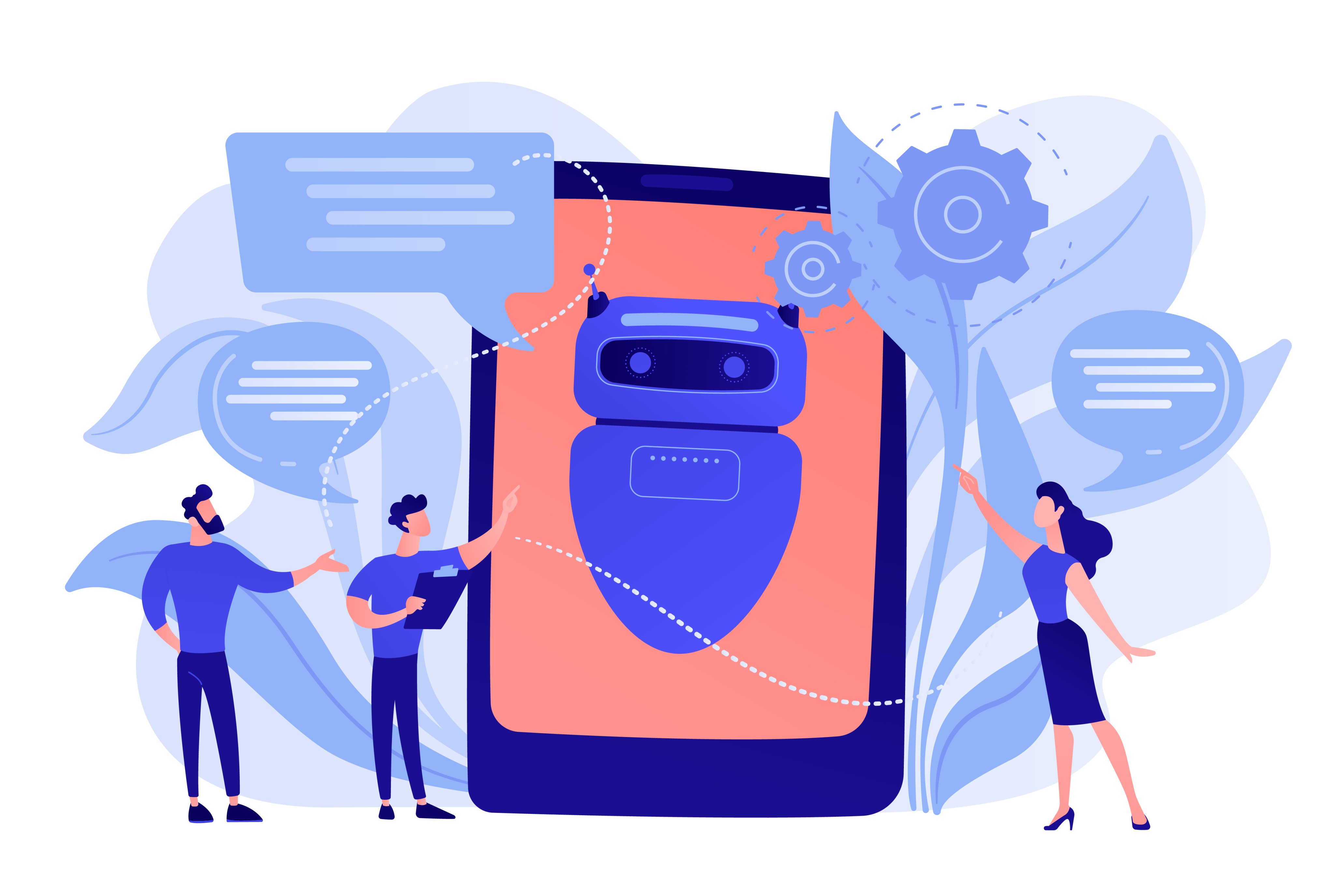In the modern age of digital times, technology has kept on changing the way businesses interact with their customers. The AI voice agent is one of the most revolutionary tools in modern communication. These digital assistants are changing customer service, sales, and support operations and offer businesses a way to connect with their customers more efficiently and effectively.
What are AI voice agents?
AI voice agents are those AI-powered tools interacting with users through voice. Unlike traditional automated systems that depend on rigid, pre-programmed responses, AI voice agents use advanced technologies such as Natural Language Processing and Machine Learning to understand, interpret, and respond to human speech in a conversational and human-like manner.
These agents are applied to everything from answering customer queries, through facilitating transactions, to even managing complex support issues. They can also conduct context-aware conversations, unlike the much older Interactive Voice Response systems.
How AI Voice Agents Work?
AI voice agents employ many high-level technologies in cooperation. Let us take a closer look at each step of how such an intelligent system works.
Step 1: Capturing the User's Voice Input
The entire process starts when any user speaks to the AI voice agent through a AI phone. Advanced signal processing technology converts the sound waves of the user's speech into digital audio signals. This step ensures that the spoken input is prepared for further analysis.
Step 2: ASR-based Speech-to-Text Conversion
Once the speech is captured, it is the job of the Automatic Speech Recognition system to come into play. It processes the audio signals and transcribes the spoken words into written text. The ASR system does this by breaking down the audio into phonemes, which are the smallest units of sound in speech.
These phonemes are then matched against words in the system's large vocabulary using machine learning models trained on diverse datasets of spoken language. For example, if the user says, "What's the weather today?", the system changes it to text: "What's the weather today?
Step 3: NLP-based Text Analysis
Once the audio input is converted to text, the AI-powered voice assistant tries to understand what the user wants with the help of NLP. It does this by breaking down the text into parts through tokenization, separating it into individual words or phrases. In this way, the system identifies the purpose for which the user asked for something via intent recognition-whether he or she was looking for information, setting a task, or needing help.
To be more precise, the context of the conversation is observed to include the place, preferences, and any prior interactions with the user. If needed, sentiment analysis will be applied to see if there is any emotional tone in the message, which requires a response with empathy. These steps, put together, ensure that the AI Voice Agent will understand what the user wants and gets ready for an appropriate response.
Step 4: Decision-Making and Response Generation
Once the AI voice agent has recognized the user's intent, it subsequently drafts a suitable response. This is followed by Natural Language Generation to create a grammatically correct, contextually relevant reply which would fit the query of the user. For example, if the user asks about the weather, the agent could respond with something like, "The weather today is sunny with a high of 25°C."
In cases where an interaction involves the performance of an action, like booking an appointment or sending a message, the agent interacts with external APIs or databases to carry out the necessary action. It integrates all such capabilities to make the response from the AI voice agent both meaningful and actionable.
Step 5: Converting Text to Speech
The AI voice assistant then speaks the response through Text-to-Speech technology, which converts the generated text into spoken language. These systems use either pre-recorded samples of voices or synthetic voices to create natural-sounding audio. Advanced TTS systems adjust pitch, tone, and pauses to make the speech conversational and engaging. This ensures that the voice output is smooth and human-like, enhancing the user experience by maintaining a natural flow of interaction.
Step 6: Providing the Response
This response is then real-time provided to the user for an interactive feeling. The clarity and relevance of the response, be it to answer a question, provide information, or an acknowledgment of something done, is paramount with the AI voice agent. It is an important step, because the process should start and remain painless, or at least as fluid and responsive as speaking with a live agent.
Step 7. Feedback and Continuous Learning
Each use of the AI Voice Agent makes it better one way or another. It is in this regard that, with the help of Machine Learning, or ML, the system is able to review the effectiveness and relevance of the responses it provided in order to provide the correct one for any user query by finding lots of room for improvement.
This means that as time goes by, the agent will learn more and more patterns of users' behaviors and improve the ability to recognize intent and contextual understanding. The knowledge base is also being improved by it with new words and phrases that are learned from users saying them.
For instance, if users more often raise certain topics, then the agent will be better prepared to discuss those topics the next time around. This is a feedback loop: constant evolution in which the AI voice bots gets better with each interaction to provide even more accurate and personalized experiences.
Key Benefits of AI Voice Agents
AI voice agents bring transformative advantages to businesses and customers, making them an essential tool for modern communication. Here’s a detailed look at their benefits:
- 24/7 Availability: AI voice agents can work 24/7, helping customers at any time of the day, without having to wait for business hours. This means accessibility across the world and enhanced customer satisfaction without increasing staff.
- Scalability: Unlike human agents, AI voice agents can handle thousands of interactions simultaneously. That makes them ideal in managing high Ai call volume, seasonal and event-driven traffic.
- Cost Efficiency: AI voice bots automate routine tasks and save them much in operational expenditure. This is because it saves businesses the costs incurred in recruitment and training while channeling these resources into core strategic areas.
- Personalization: AI voice agents leverage customer data for personalized interactions: greeting customers by name or offering them personal recommendations, all to help improve customer relationships and loyalty.
- Improved Accuracy: AI voice bots can only give answers that are very concise and contextually fitting because it has been trained through masses of data input; this will also minimize the possibility of any error, and allow one to gain trust in the reliability of a system.
- Support Multilingual: AI voice agents allow for fluent communications in multiple languages and dialects; this helps enterprises reach a very diversified audience and makes their accessibility quite easy for non-native speakers.
- Faster Resolution: Times AI-powered voice agents resolve queries with instant access to databases and, for complex issues, ensure seamless transitions to human agents with minimal customer wait times.
- Improved Customer Experience: AI voice assistants offer a mock conversation experience to that of human interactions, attuning and changing sentiments with the tone of the users. The customer gets his feelings heard; thus, more engaging and empathetic to the customers who would remain satisfied and loyal.
- Integration with existing systems: AI voice agents are integrated with CRMs, databases, and tools without any leakage in integration, ensuring that all the operations stand at par. This will let it do real-time updates, say order processing or maintaining account details.
- Reduced Waiting: Time AI voice agents respond to repetitive queries, minimizing customer waiting time. This frees the human agents to select more complex issues and solve them with efficiency.
Voice call are a game-changer for businesses aiming to enhance efficiency, reduce costs, and deliver superior customer experiences. With companies like Tabbly offering cutting-edge solutions, adopting this technology has never been easier.
Tabbly’s AI voice agents bring together advanced features like personalized interactions, multilingual support, and seamless integration, making them an ideal choice for businesses of all sizes.
Real-World Applications of AI Voice Agents
AI voice agents are revolutionizing how industries operate by improving efficiency, customer satisfaction, and accessibility. Below are additional examples of their diverse applications:
1. Customer Service
AI voice agents make customer service easier by eliminating the need to ask routine questions and answer common problems.
- Examples include troubleshooting technical problems, tracking orders, and resetting passwords.
- Impact: Reduced load for human agents, faster response time, and customer satisfaction.
2. Healthcare
AI voice agents are changing the face of patient care by automating routine tasks.
- Examples include appointment scheduling, medication or follow-up visit reminders, and symptom checks.
- Impact: Reduces administrative burden for health professionals, while increasing patient engagement and access.
3. Banking and Finance
AI voice agents in finance improve the customer experience while not compromising the high standards concerning security.
- Examples include balance updates, fraud detection by voice biometric analysis, and secure payment processing.
- Impact: It provides quick service, secure service, personalized at low operational cost.
4. E-commerce and Retail
AI voice agents are playing a critical role in improving online shopping experiences.
- Examples include helping customers find products, answering questions about return policies, and making personalized product recommendations.
- Impact: Increased user engagement, better conversion rates, and reduced cart abandonment.
5. Travel and Hospitality
AI voice bots make the planning easier and are a boon for the experiences of a guest in the hospitality industry.
- Examples include booking flights, managing hotel reservations, and answering frequently asked questions regarding travel policies or amenities.
- Impact: More convenience to the travelers and reduces operational delays to service providers.
6. Education and E-Learning
AI voice assistants help both students and educators to make learning engaging and more accessible.
- Examples include answering course-related questions, setting up tutoring sessions, and sending automated progress reports.
- Impact: Improved remote learning experiences and more support for diverse learner needs.
7. Real Estate
AI voice agents improve property management and enhance the interaction of clients in real estate.
- Examples include scheduling viewings of properties, answering questions about listings, and sending reminders about documentation.
- Impact: Saves the time of agents and much better experience for probable buyers/tenants.
8. Recruitment and HR
AI voice bots will help automate processes in HR and improve the employee experience.
- Examples include scheduling interviews, answering queries related to jobs, and onboarding assistance.
- Impact: Saves time to the HR teams and enhances the candidate experience.
Future AI Voice Agents
As AI continues to evolve, the capabilities of AI voice bots evolve with it. The integration of Generative AI and emotional intelligence into these systems holds even more promise for human-like interactions. Future AI voice agents will understand words and emotions, hence making conversations more empathetic and interesting.
Further, it is also predicted that in the emerging markets, the growth in adoption of AI voice agents would be increased owing to the multi-language and multi-dialect capabilities that are available with AI-powered virtual agents.
Meet Tabbly: The AI Voice Agent Revolutionizing Communication
If you're looking for a modern AI voice agent solution, then Tabbly is the company to explore. The company develops intelligent voice agents for specific business needs under any industry requirements. With Tabbly, the focus is on integrating this seamlessly, supporting multiple languages, and giving real-time processing so as to enable a business to improve customer experiences and reduce operational costs.
With Tabbly's intelligent voice assistants, experience tailored and personalized conversations, as these help with increasing customer interaction and satisfaction. Be it enhancing customer service with support, automating, or smoothing out sales conversations; let your business excel with the use of this platform.









